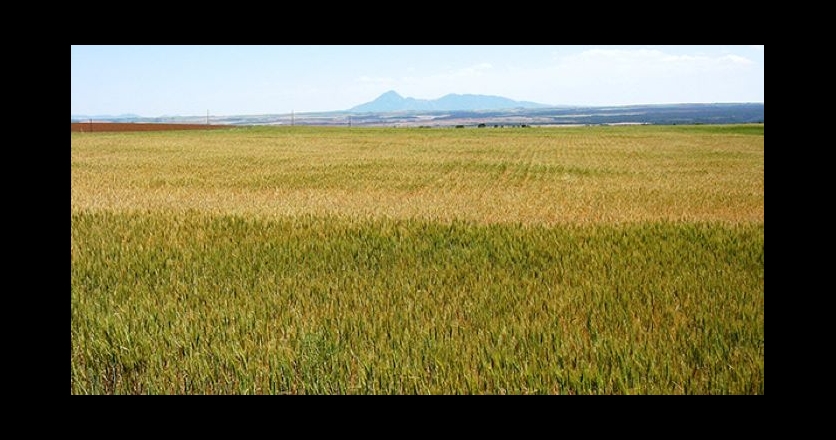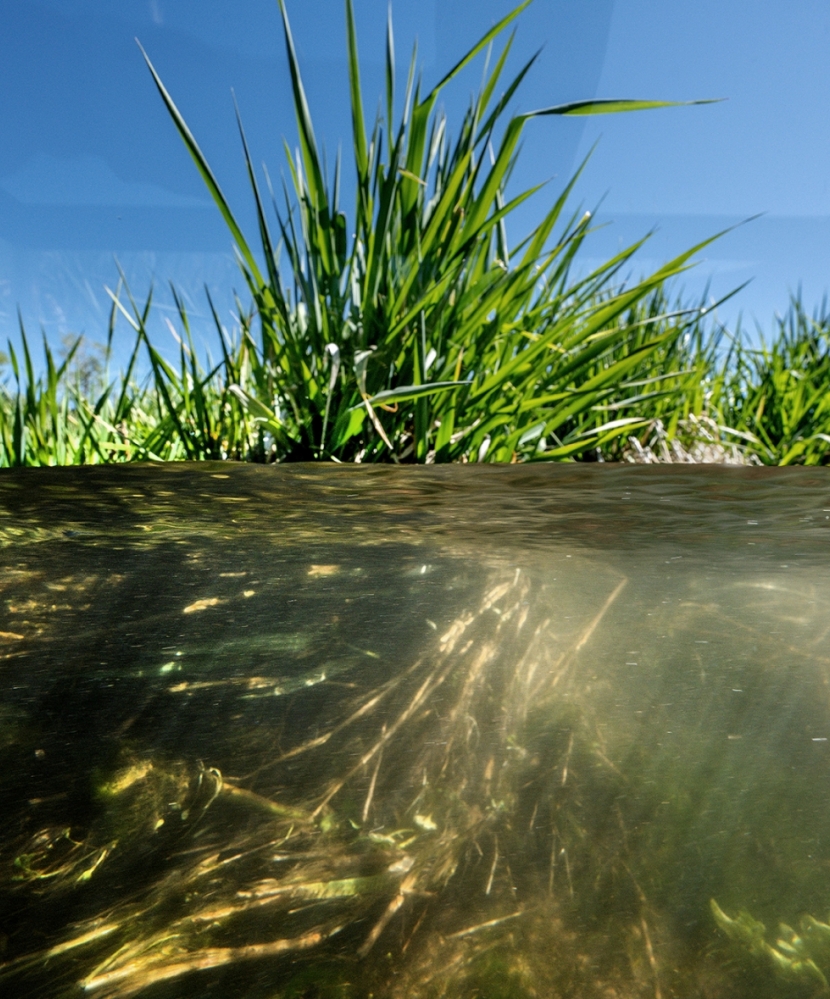Drying Out
There is a smell in the riparian corridors of the West, and when your nose brushes up against it your eyes pop open and you become more alert. It’s the smell of water and the smell of life, and you don’t realize how foreign that element is in the Western landscape until you smell it.
John Wesley Powell, an early explorer of the Western United States, came to understand the aridity of this landscape after floating down the Colorado River in 1869. Realizing that there existed in the West more irrigable land than water to irrigate it, he warned of future water shortages. Tree-ring data reveals that the Colorado River Basin has gone through dramatic dry periods for centuries, confirming that water is indeed a finite resource here.
Modern travelers can glean the same message by looking out the window of an airplane when flying across the country. Heading west, somewhere over Nebraska and Kansas, the mosaic of farm fields changes from dryland rectangles that are totally reliant on rain into pivot-irrigated circles dependent on subterranean aquifers. The transition highlights the tipping point, where irrigation from sprinklers and ditches becomes essential to guaranteeing a crop. Today, agriculture accounts for about 80 percent of the surface water used in the West.
Managing water
Water management has deep historic roots, especially in the Middle East, where extreme desert environments demand sustainability for survival’s sake. The kibbutz culture of Israel is a model where traditional communal societies nurture essential food crops and lush, flowering gardens that rival the mythical Gardens of Babylon.
These inspiring agricultural achievements result from cultural mandates ordained by “don’t-waste-a-drop” necessity through social cohesion and technologies like deep wells, recycling of wastewater, and desalination of seawater, in which Israel is a world leader. Rarely in Israel does one find surface water. Instead, water is transported through sophisticated piping systems that feed vast, drip-irrigated greenhouses.
Here in our region, the results of less efficient forms of irrigation are made glaringly clear in late summer and fall on the lower Crystal River, which one can walk across without getting wet feet. At times, the water in the river can be completely diverted to irrigate hay crops for local farms and ranches.
In dry Western landscapes bereft of surface water, relying on rain to water crops is an act of faith. Hearty dryland farmers in southwestern Colorado must depend upon scant rainfall to produce wheat and pinto beans in the red soil of the high desert.
Jack Tanner knows the value of water historically and personally. His family has owned and operated Midland Bean Company, a grain elevator and wholesale business in Dove Creek, in the southwestern corner of Colorado, for 60 years. He has spent decades observing harvests, the quality and quantity of which are dictated by rainfall.
“Last year’s drought devastated our wheat and beans,” says Tanner, whose business depends upon what neighboring farmers produce. “We’re in extreme drought in western Colorado now, and we expect just 30 percent of snow runoff for our irrigation water this summer.”
Taking advantage of what little natural rain and snow comes their way requires careful plowing and chiseling of fields, says Tanner. This practice allows moisture to settle into the top layers of mulched soil rather than be absorbed by deep cracks and fissures. Still, crop yields are left to luck as dictated by the whims of weather. “In dryland farming, you depend on Mother Nature,” concludes Tanner.
An antiquated system?
In mountain river valleys, like the North Fork of the Gunnison, which flows through some of the most productive farm country on the Western Slope, farmers must contend not only with varying river levels and unexpected drought, but also with the laws and edicts that stipulate who can use what water, and how much.
Mark Waltermire has been growing food across the country for decades. Today, he owns Thistle Whistle Farm, a 15-acre vegetable farm in Hotchkiss. Along with five seasonal employees, he produces five acres of produce per year, grows culinary and medicinal herbs, and raises a variety of livestock, honeybees, and fruit.
Developing his agricultural knowledge at educational farms on the East Coast, Waltermire started anew after moving to western Colorado.
“I had to relearn how to farm,” he says. “Back East, we didn’t irrigate because it rains so much. In some ways, it’s easier in the West, where I rely on irrigation as opposed to rain, because I have control. Unless the ditches run dry.”
Waltermire has seen friends lose entire vegetable crops when their ditches ran dry because their water rights were junior.
“I’m lucky,” he says, “I’m on a very old ditch, so I haven’t had any problems with losing my water. But I’m an exception.”
In Colorado, a complex system of laws dictates water use. Primarily, the law stipulates that the longest-running uses of water have precedence over those that come later, and that each water right is guaranteed the historic amount of water that’s been required to fulfill the need—as long as the allotment is continually used.
Waltermire describes the legal framework that his water use is governed by as antiquated: “The old ideas about water are driven by the law and by a fear of losing water if you don’t use it. So, irrigators don’t respond to the environment, or the health of their fields. They’re inclined to put as much water on their land as they can to show beneficial use.”
This practice, he adds, means that promoting efficient irrigation techniques is contrary to the predominant culture in the state’s farming community.
“If I invested in modern efficient irrigation, the water I use to irrigate 15 acres could irrigate 75,” he says. “But I can’t do that, fiscally or legally. If you think about my acreage and multiply that by how many similar lots are in the valley, there’s a huge amount of excess water if we invest in efficiency.”
Waltermire concludes that the farming culture needs to change, and the law needs to change with it. “We need a cultural shift away from fear of losing water to a security in having the access you need to produce your crop efficiently. Right now, we have a water use problem as much as a water shortage problem.”
Western settlement happened quickly, with most immigrants coming from the water-rich Eastern United States, filled with hope and a government promise of prosperity. This hope conflicts with scientific data showing that water has been an ephemeral resource in the West for millennia.
What’s known today by those who have accumulated hands-on experience with water in the arid West is that water demands a respect that’s born out of understanding how water exists here: in thin ribbons snaking down riparian gorges that bear the scent of water … and of life. ❧







